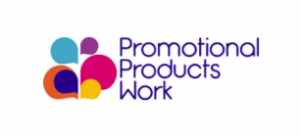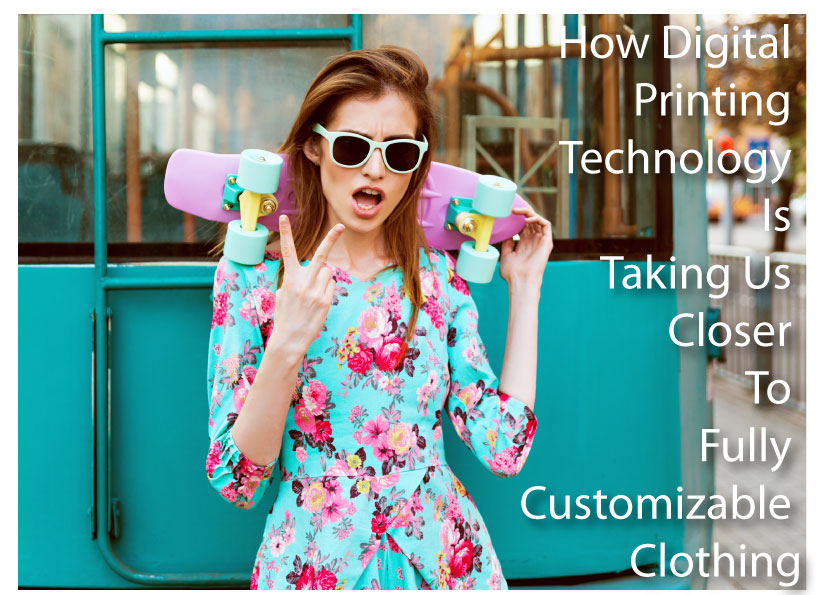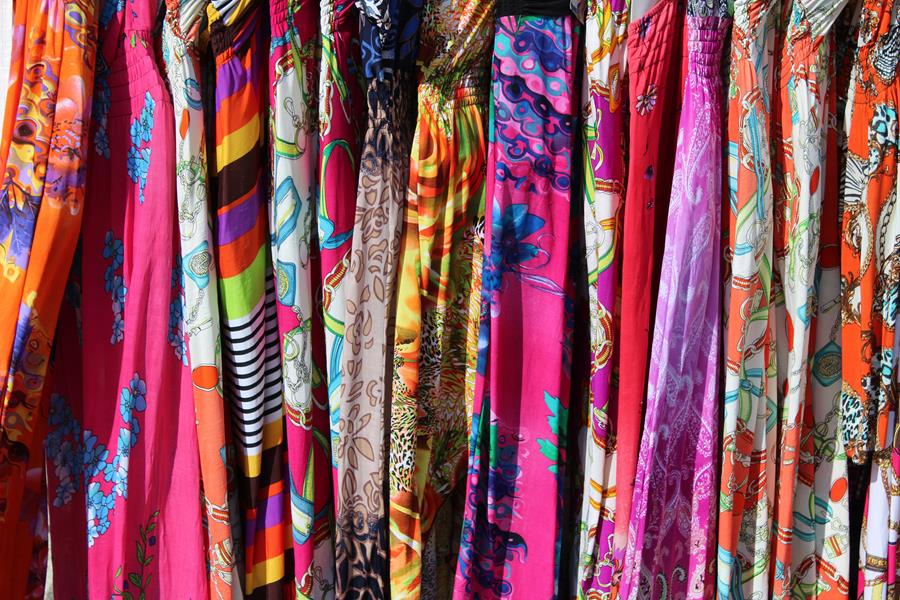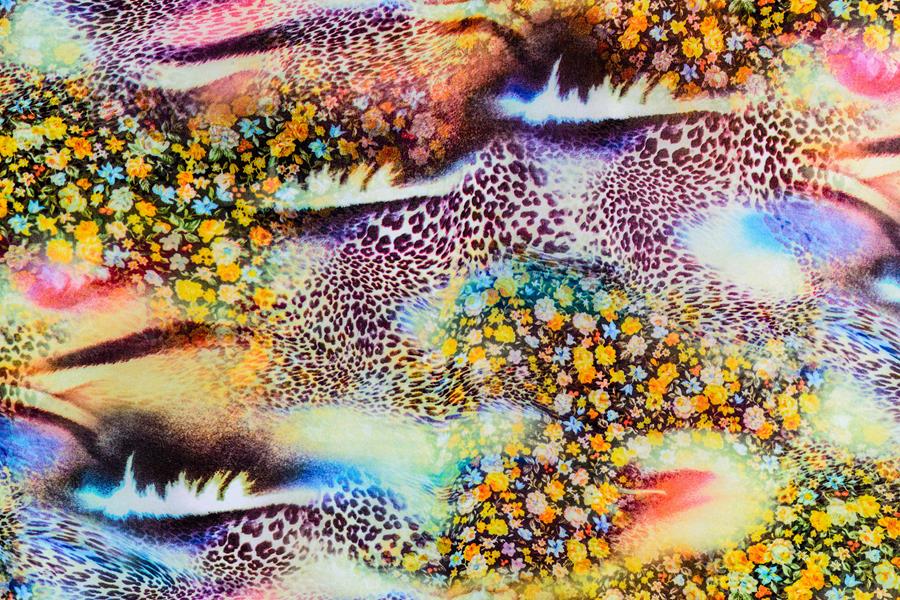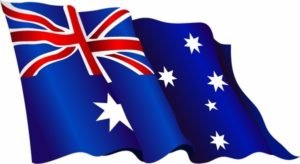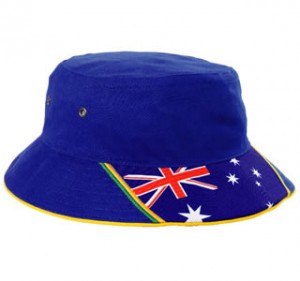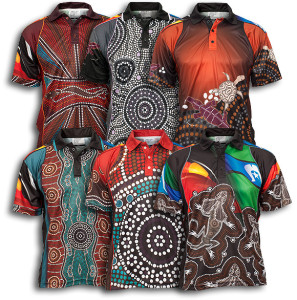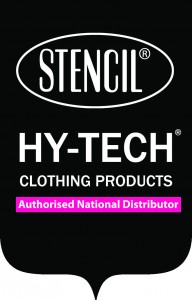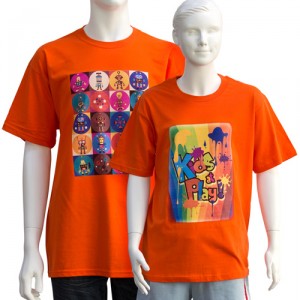25 Insane (But True) Facts About Promotional Products
If you’re in the business of finding promotional products, you know the impact they can have on an organisation’s marketing efforts. But do you know these fun facts about promotional products?
- Eight in 10 consumers own between one and 10 promotional products.
- Fifty-three percent of these people use a promotional product at least once a week.
- Six in 10 of them keep promotional products for up to two years.
- Only one in five people will trash an unwanted promotional product.
- Before receiving a promotional product, 55 percent of people had done business with the advertiser. After receiving a promotional product, 85 percent of people did business with the advertiser.
- With nearly six thousand impressions, bags generate more impressions than any other promotional product in the U.S.
- Thirty-one percent of U.S. consumers own a promotional bag.
- At one-tenth of a cent, bags tie with writing instruments for the lowest cost per impression of any promotional product in the U.S.
- The first known promotional products – commemorative buttons – trace back to 1789 when George Washington was elected president.
- Fifty-three percent of the time, promotional products create a more favorable impression of the advertiser.
- Forty-eight percent of consumers would like to receive promotional products more often.
- Consumers hang on to promotional products for an average of 6.6 months.
- Sixty-nine percent of consumers would pick up a promotional product if they deemed it useful.
- Sixty-three percent of consumers pass along the promotional products they no longer wish to keep.
- Eighty-nine percent of consumers can recall the advertiser of a promotional product they’d received in the last two years.
- Ninety-one percent of consumers have at least one promotional product in their kitchen, 74 percent have at least one in their workspace, 55 percent have at least one in their bedroom.
- Seventy-seven percent of consumers say a promotional product’s usefulness is the number-one reason to keep it, with health and safety products, computer products and writing instruments ranked as the most useful.
- The top five buyers of promotional products are clients in education, finance, not-for-profit, healthcare, and construction.
- Wearables are the top product category, followed by writing instruments, bags, calendars and drinkware.
- The first promotional product tradeshow was held in 1914 – there were 32 exhibitors.
- Women are more likely to have bags, writing instruments and calendars, whereas men are more likely to own shirts and caps.
- Ownership of logoed outerwear is highest in the Midwest, with 15 percent of people owning an item.
- Logoed mugs in particular are more effective advertising than radio and television spots; 57 percent of people were able to recall the advertiser on a mug, versus 32 percent of radio and 28 percent of T.V.
- Adding a promotional product to the media mix increases the effectiveness of other media by up to 44 percent.
- Promotional products draw as many as 500 percent more referrals from satisfied customers than an appeal letter alone.
Are you still skeptical about the power or promotional products?
With thanks to PPAI
7 Golden Rules for Picking Great Promotional Products
Everyday customers old and new reach out to BONGO to get sound advice on what promotional products they should use for their business. But what makes a great promotional product? With 1000’s of lines available online, it can be daunting to get to grips with the options!
To help you, here are 7 golden rules for picking great promotional products:
QUALITY
Quality is the key. If a quality and useful promotional product is received by your client - they will certainly remember you.
DESIRABILITY
This is especially important to get right as gifting potential leads an item that isn’t desirable, may reflect your company in the same light: a desirable item denotes a company of quality!
USABILITY
Understand that usability key! Statistics show that 90.4% of people report currently owning or possessing a promotional product received in the last 24 months so it stands to reason that the most useful the item is, the more likely it is that your promotional product will stick around, day in, day out.
RELEVANCE
Understand that relevance is a big factor – and every sector is different. A branded lip balm for a Lawyer’s conference – is that the best fit? Would that gift be relevant and well received by those potential leads? Probably not. Understand your target audience and pick the most desirable items for the people you want to want to reach out to.
CREATIVITY
Use promotional products to make a lasting statement about who your company are, and what you offer. Take time to think of a creative idea that ties in with your brand marketing strategy – what special service do you offer? What goods can you deliver? Don’t be afraid to think outside the box – be fun! Are you a dentist? Why not send out some sugar-free sweets in a playful way? Trying to recruit people to sign up to your gym? Why not gift them a free water bottle so that you’re always on their desk, reminding them to get in touch and get fit – the possibilities are endless!
INTRIGUING
Try and see your product to introduce a bit of curiosity with your potential customers, we can help you with plenty of inspiration! For example, is a client a PR company? Why not send a branded pen with an inscription – ‘What could we write for you?’. Be playful, think outside the box. What would intrigue you to make that enquiry?
GOOD VALUE
However great all the other rules - just remember what would be best associated with your brand: VALUE.
Digital Printing Technology
How Digital Printing Technology is taking us closer to fully customizable clothing. The future of fashion, according to Epson, is all about customization. From the prints and colors we choose to wear, to indeed the size and shape that best suits us.
Tie together digital printing, a bit of artificial intelligence and some robotics on the end, and it’s a vision that’s not too far off, which is precisely what the technology company is hoping to help make possible on all accounts.
Its senior team, including global president Minoru Usui, was in New York last week to host its third annual “Digital Couture” event. This saw 13 design teams from across North and Latin America leveraging Epson’s dye-sublimation and direct-to-fabric printing technology to create small collections that were presented during an evening event held ahead of New York Fashion Week. The occasion also served to officially introduce the fact Epson acquired Italian textile printer manufacturer Robustelli in 2016.
“This event is an opportunity to underscore Epson’s commitment to the industry, and to showcase the increasing impact of digital technologies on innovation in the world of fashion,” says Usui. “Working with [Robustelli], Epson has helped drive the shift to digital by some of the leading fashion houses who value the quality, throughput and high cost performance we bring to their unique creations.
While digital printing itself isn’t a new concept – Epson already works with numerous leading fashion brands it can’t name, as well as the likes of Under Armour and Adidas – it's undergoing a period of rapid adoption today, Usui explains. He refers to the idea of being “one third of the way up the digital mountain.” In fact, the market for worldwide digital textile printing is expected to grow annually at almost 25% until 2019, according to WTiN Intelligence.
Part of the reason for that increased uptake comes down to market forces. In the first instance, the fashion industry is going through an evolution (revolution even) in terms of how it gets product from the runway during fashion week to stores and ultimately customers’ wardrobes, quicker than ever.
Focused on a strategy coined “see-now, buy-now”, this is about responding to the gap that lies between fashion shows that have become heavily consumer facing in the digital and social media era, and the point of delivery typically some 6 months later. In short, consumers want to be able to "see" the garments now and indeed "buy" them right away. Designers inevitably want to not only capitalize on that buzz and negate the current fatigue they're seeing shoppers otherwise have, but also increase the barriers for fast fashion brands to play copycat.
That motivation and momentum means a serious shift in the production timeline however. Unique prints on textiles are just one part of the pie, but a significant one. It currently takes anywhere from two to three months for traditional screen-printing. Digital printing by comparison can happen immediately.
Other benefits include the fact digital printing ensures higher quality, more unique designs at scale, greater variety of rich colors and more. It’s literally possible to take a picture on your iPhone today and print it onto a textile at photo-realistic quality straight away.
The cost performance for small production runs also means looks can be created on a scale of one – rather than thousands. That means personalized designs for individual customers on-demand on the one hand, as well as an ability to print “just in time” – so when the demand is there, rather than stockpiling and ultimately creating waste – on the other.
“The cost to produce one or thousands is the same, it doesn’t make a difference at all,” explains Timothy Check, product manager of Professional Imaging at Epson. The equipment itself can either be scaled to multiple machines for mass production, or just be done on one small, relatively affordable, one. His view is on the flexibility this affords designers and retailers to also change and adapt strategy based on which pieces perform well in the market, or update looks for new seasons at ease.
“People want something different these days, they want something that stands out," he says. "We’re working with a lot of manufacturers who say they’re not doing 20,000 of the same garment anymore, but just doing 500 of them. Then they’ll do another 500, but in a slightly different color perhaps. They’re doing more things of smaller quantities. Digital enables a producer to be able to do that efficiently. The traditional method by comparison is not possible to do cost effectively.
This is especially relevant to think about for the millennial generation, 48% of which expect brands to customize offers these days to suit their needs, according to American Express. That refers to everything from pricing to messaging, but product is becoming an ever-present part.
“The pattern of [the fashion industry] is to produce at high volume and sell high volume, so we have to convince people to move away from that model into a customized one,” Usui explains, in relation to the biggest barrier for digital printing’s broader uptake. “That’s why an event like this is good for us – we can bring young designers together to think about this and show what’s possible – show how to shift this business into the digital era.” Earlier on the same day, Epson held a Fashion & Technology Forum featuring speakers from PVH, For.Tex, Elie Tahari and more, discussing the same subject. Designer Erin Fetherston, who already uses digital printing, noted customization, or certainly originality, as one of the industry’s most pressing needs: “The biggest challenge for a brand my size is seeing consumers wanting more and more uniqueness… That is the opposite to how you would have strategized your production a few years ago.” She added: “With see-now, buy-now, when that becomes the norm, then we have to work backwards in our process and figure out how we do things faster. That’s when technology becomes our greatest aid.
Of course being able to print customized, made-to-order textiles at high speed still leaves a further gap around the rest of the production process, which is where Epson believes further technological innovation can step in. Artificial intelligence will increasingly play a role in sizing solutions for instance, while robotics will be what helps with cut-and-sew. “Epson has a very considerable and growing robotics business and we would like to leverage that business in this industry in the future to help designers create very industrialized designs,” Usui adds.
Speaking at the forum, Barry McGeough, group vice president of PVH Innovation Next, noted how important this will be for a “local for local” (local manufacturing for local sales) strategy in the future. This is both about speed to market and more sustainable processes, he explained. “To do that, we are going to have to make sure we have robotics; a lot of automated processes that can move these things really quickly. It’s about lead time optimization.” He referenced Sewbo, a Seattle-based business that has created the first industrial robot able to sew together a t-shirt. While for designers like Fetherston, where a heavy level of handmade, delicate work is core to the collection, that might seem an unlikely solution, but the longterm possibilities are evidently there. For now, the digitization of textile printing is inevitably and already well on its way.
Rachel Arthur is a business journalist, innovation consultant and the founder and editor of Fashion & Mash, a daily news site covering the intersection of fashion and technology.
On Australia Day we come together as a nation to celebrate what's great about Australia and being Australian. It's the day to reflect on what we have achieved and what we can be proud of in our great nation. It's the day for us to re-commit to making Australia an even better place for the future. On this day, Australian adorn themselves with all sorts of Aussie promotional products to celebrate the day. Let us help you by putting some suggestions together for your next Australia Day corporate event or celebration. Bongo has a large range of Australiana products that are perfect not only to celebrate Australia Day, but to use throughout the year. Products include Aussie clothing, Aussie flag bags, Aussie flag keyrings, Aussie Flag Pins, Aussie flag shirts, Aussie caps & hats - as well as a huge range of Aussie supporter ideas.
Australia Day is the official National Day of Australia. Celebrated annually on 26 January, it marks the anniversary of the 1788 arrival of the First Fleet of British Ships at Port Jackson, New South Wales, and the raising of the Flag of Great Britain at that site by Governor Arthur Phillip. In present-day Australia, celebrations reflect the diverse, multicultural society and landscape of the nation, and are marked by community and family events, reflections on Australian history, official community awards, and citizenship ceremonies welcoming new immigrants into the Australian community.
The meaning and significance of Australia Day has evolved over time. Unofficially, or historically, the date has also been variously named "Anniversary Day", "Invasion Day", "Foundation Day", and "ANA Day". 26 January 1788 marked the proclamation of British sovereignty over the eastern seaboard of Australia (then known as New Holland).[4] Although it was not known as Australia Day until over a century later, records of celebrations on 26 January date back to 1808, with the first official celebration of the formation of New South Wales held in 1818. On New Year's Day 1901, the British colonies of Australia formed a Federation, marking the birth of modern Australia. A national day of unity and celebration was looked for. It was not until 1935 that all Australian states and territories had adopted use of the term "Australia Day" to mark the date, and not until 1994 that the date was consistently marked by a public holiday on that day by all states and territories.
In contemporary Australia, the holiday is marked by the presentation of the Australian of the Year Awards on Australia Day Eve, announcement of the Australia Day Honours list and addresses from the Governor-General and Prime Minister. It is an official public holiday in every state and territory of Australia, unless it falls on a weekend in which case the following Monday becomes a public holiday instead. With community festivals, concerts and citizenship ceremonies, the day is celebrated in large and small communities and cities around the nation. Australia Day has become the biggest annual civic event in Australia.
Aboriginal Indigenous clothing convey strong messages with meaningful aboriginal indigenous designs. We have a large range of indigenous designs and we can custom make your own unique design as well. Just let us know your ideas and thoughts and we can put the design together for you.
Our polo shirt designs feature Kangaroos, Emus, Geckos, Frilled Neck Lizards, Snakes, Turtles combined with unique fit designs that include the Aboriginal and Torres Strait Islander flags featuring on the shirt.
Other designs feature Dot designs which include a number of important colors. For example yellow (representing the sun), brown (the soil), red (desert sand) and white (the clouds and the sky). These are traditional Aboriginal colours.
On modern artwork, dots are generally applied with one of two instruments, (1) bamboo satay sticks and (2) ink bottles. The larger flat end of bamboo satay sticks are more commonly used for single application of dots to paintings, but the sharp pointier end is used to create fine dots. To create superimposed dotting, artists may take a bunch of satay sticks, dip the pointy ends into the paint and then transfer it onto the canvas in quick successions of dotting.
These are only a few examples of what can be achieved with Indigenous clothing designs. These designs show the capabilities and possibilities of what you can create with Indigenous art and cultural themes.
We work together with indigenous organizations in creating their own unique design that fulfills their cultural and artistic requirements.
This sublimated printed clothing range includes polo shirts, singlets, kids polos, sportswear and workwear.
Check out the latest range of Stencil polo shirts, t-shirts, business shirts and jackets.
The Stencil range of clothing has been bringing innovative new designs and fabrics into the Australian corporate, promotional, uniform and sportswear market. Stencil is best known for their high-quality, high-concept fabrics such as a yarn-woven Cool-Dry®, liquid-repelling Nano-Gear®, the vibrant and super-comfortable Solar-Lite® and their most recent addition, Bio-Weave®, a silky blend of plant cellulose and Cool-Dry® yarn.
Stencil's product range spans from distinctively styled polos and t-shirts for both men and women to business shirts, cold-weather clothing (including fleeces and jackets) and custom orders. Though Stencil is constantly working on creating and refining their new fabric technologies for each season, Stencil also appreciate the value of more traditional fabrics, from soft cottons to poly/cotton waffles. By understanding the intrinsic values of different materials, Stencil is able to match the ideal characteristics for a given item of clothing to the most appropriate fabric or blend.
Stencil carries a full stock service on all of their product lines with the promise of fast & professional service. Stencil trusts that their range will help you and your label stand out from the crowd.
T-shirts printed in full colour
NO SET UP CHARGE 🙂 Our new range of digitally printed promotional t-shirts allows small production quantities for cheaper prices. No more costly screen set up costs - just a one cost t-shirt price. Full colour printing available on quantities as low as 20 units on top quality 100% cotton t-shirts.
One of the earliest examples of T-shirts with a logo or decoration can be found in the 1939 film The Wizard of Oz. Three men attending to the Scarecrow at the Wash & Brushup Company in Emerald City are seen wearing green T-shirts with the word "Oz" printed on the fronts.
In the early 1950s several companies based in Miami, Florida, started to decorate T-shirts with different resort names and various characters. The first company was Tropix Togs, under founder Sam Kantor, in Miami. They were the original licensee for Walt Disney characters in 1976 including Mickey Mouse and Davy Crockett. Later, other companies expanded into the T-shirt printing business, including Sherry Manufacturing Company, also based in Miami. Sherry, started in 1948 by its owner and founder Quinton Sandler as a screen print scarf business, evolved into one of the largest screen printed resort and licensed apparel companies in the United States.
In the 1960s, the ringer T-shirt appeared and became a staple fashion for youth and rock-n-rollers. The decade also saw the emergence of tie-dyeing and screen-printing on the basic T-shirt and the T-shirt became a medium for wearable art, commercial advertising, souvenir messages and protest art messages. Psychedelic art poster designer Warren Dayton pioneered several political, protest, and pop-culture art printed large and in color on T-shirts featuring images of Cesar Chavez, political cartoons, and other cultural icons in an article in the Los Angeles Times magazine in late 1969 (ironically, the clothing company quickly cancelled the experimental line, fearing there would not be a market). In the late 1960s Richard Ellman, Robert Tree, Bill Kelly, and Stanley Mouse set up the Monster Company in Mill Valley, California, to produce fine art designs expressly for T-shirts. Monster T-shirts often feature emblems and motifs associated with the Grateful Dead and marijuana culture. Additionally, one of the most popular symbols to emerge from the political turmoil of the 1960s were T-shirts bearing the face of Marxist revolutionary Che Guevara.
Today, many notable and memorable T-shirts produced in the 1970s have become ensconced in pop culture. Examples include the bright yellow happy face T-shirts, The Rolling Stones tops with their "tongue and lips" logo, and Milton Glaser's iconic "I ♥ N Y” design. In the mid-1980s, the white T-shirt became fashionable after the actor Don Johnson wore it with an Armani suit in Miami Vice.

